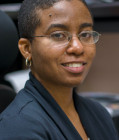How Assumptions about Race and Gender Skew School Reforms for Black Boys
In August 2016 Washington D.C.’s Ron Brown College Preparatory High School opened its doors to 100 black boys. It joined at least forty other publicly-funded all-black male schools proposed or established across the nation since the early 1990s. Such schools are promoted by The Nation of Islam’s Louis Farrakhan, Facebook’s Mark Zuckerberg, and an array of other unusual bedfellows as a means of countering what they regard as a major problem —the emasculation of black boys’ in white, female-dominated classrooms. However, my research reveals that while all-black male schools may be able to help close some educational gaps, the movement to open them rests on several misguided assumptions which, if left uncorrected, will fail to improve black boys’ education.
The Case for a New Iteration of All-Male Black Schools
Single gender schooling for black children is not new. From slavery well into the twentieth century, many of the educational opportunities available to blacks were segregated by gender. Prominent examples include Morehouse College, established in 1867 to educate young black men in theology and the liberal arts, as well as the Daytona Literary and Industrial School for Negro Girls, founded in 1909 to provide young black women with technical training in domestic science, teaching, and nursing.
Today we see a distinctively new mix of race, gender, and class-based politics at work in efforts to create all-male black schools. These schools have several important advantages. They reflect black people’s longstanding faith in and use of education to counter racism. In addition, many black and white supporters of all-black male schools rightly emphasize that they can help redress problems caused by Eurocentric curricula, underfunding, and other instances of racism built into the educational system. Proponents also correctly emphasize that gender expectations influence black boys’ experiences of racism. For instance, there is ample evidence that white women teachers discriminate against black boys not only by treating them as racially inferior but also by assuming that this supposed inferiority is manifest as abnormal masculinity or through violent, hypersexual, and otherwise inappropriate classroom behaviors. Finally, some proponents persuasively argue that newly created all-black male schools are well-positioned to utilize vouchers, open enrollment policies, and other reforms that expand black boys’ opportunity to choose educational institutions attuned to their specific curricular and pedagogical needs.
Problematic Assumptions
Although promising, all-black male schools are not a panacea for what ails black children, including boys, in part because their proponents often make misguided assumptions. Many ignore the degree to which educational reforms that aim to privilege “choice” – in the school system and beyond – can end up legitimizing reduced government spending on the very social services that blacks most need. In addition, many advocates of all-black male schools wrongly assume that black boys underachieve because they are forced to learn in “overly feminized” classrooms lead by racist white women teachers. Such teachers, they presume, fail to either acknowledge or foster black boys’ so-called “naturally aggressive” learning styles. But the problem with this perspective is that there is no scientific evidence that boys and girls have inherently different, biologically derived ways of learning.
Another problematic assumption is that black girls and women are sexual distractions who share the blame for black boys’ underperformance in school. Proponents of this idea describe black teenage girls’ shamelessly presenting themselves as “forbidden fruit” for otherwise upstanding young black men. Others point fingers at black women teachers who, it is claimed, express more interest in improving the educational outcomes of black girls than black boys. Such claims perpetuate the flawed but well-entrenched assumption that black women and girls are hypersexual deviants or “jezebels” who corrupt the men and boys in their midst.
Overall, the push to open all-black male schools obscures the extent to which both black girls and black boys are underachieving relative to their white counterparts. For example, although black boys are far more likely to be suspended than white boys, black girls are also more likely than white girls to be assigned to “special education” classes or to get suspended from school. Black girls, furthermore, have the lowest SAT scores of all female students. Racial disparities hurt black boys and girls alike.
The Way Forward
Over the past twenty-five years, scholars, policy-makers, parents, and educators have pushed gender-segregated schools as a key means of improving educational outcomes for black boys. Although often well-intentioned, this push can only succeed if it is more attentive to the conditions that must be in place for all black children to achieve in school. Priority must go to a particular kind of educational advocacy that combines criticism of the longstanding educational deficits that have hampered blacks with an understanding that anti-racist school reforms are only effective when they foster not some but all black people’s capacity for self-determination.
What does such advocacy look like in concrete terms? One partial answer can be found in the efforts of black educational philanthropists of late the 1800s and in the work of Pan-African elementary and secondary schools in the late 1960s and 1970s. All of these efforts recognized that public schooling too often limits black people’s ability to define and pursue educational targets of their own choosing including race-specific and gender specific goals. Equally important is the recognition that black self-determination can only be pursued effectively if parents, teachers, educators, and policy makers understand that black people of all genders experience racism in the classroom. Reformers cannot ignore the reality that racial, gender, and class impediments intersect to limit possibilities for black people, including women and girls, to decide how, when, where, and why they are educated.
Read more in Keisha Lindsay’s, In a Classroom of their Own: The Intersection of Race and Feminist Politics in All-Black Male Schools (University of Illinois Press, 2018).
